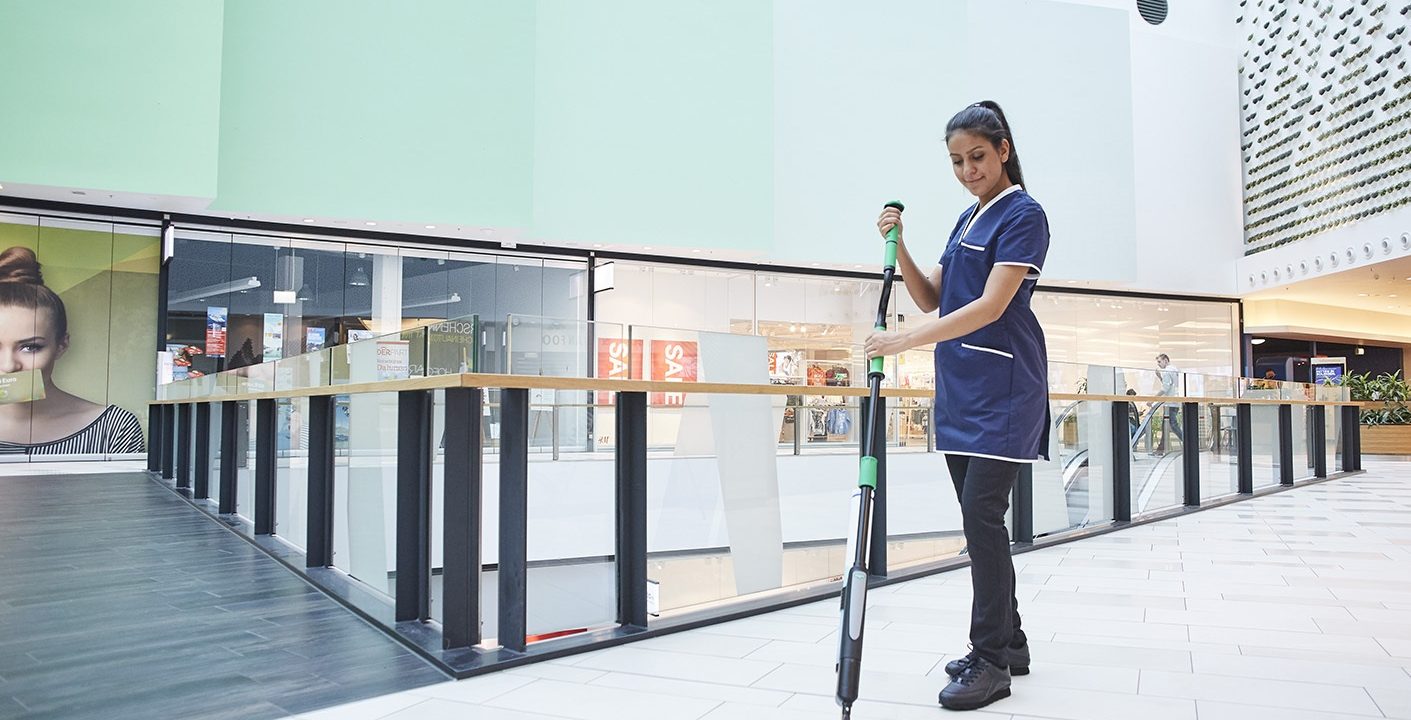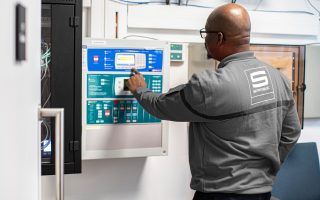How efficient is your current store cleaning checklist?
Retail professionals understand that shopping isn’t only about the final purchase, it’s about the customer’s journey to get there. Everything about the retail environment – and retail facilities management, in fact – is aimed towards one goal: to create the kind of pleasurable, comfortable (and safe) experience that ends with a purchase. Of course, cleaning is integral to this goal. Shopping is an activity not just of the body and mind, but one of senses and emotions. There is a heightened desire for a satisfying shopping experience.
When we work in the same location each day, we can all develop blind spots and forget how others see it. It is worth asking yourself if you might be overlooking the cleaning standards in any area of your store. Imagine you are entering your store for the first time, as a shopper. Do your surroundings look and feel clean, and if not, why not?
The next thing to ask yourself is if your cleaning checklist covers every area of your store. And more crucially, do your employees – if they clean your store – complete that checklist on top of their other duties?
As a guide, we will review the essentials of any good retail cleaning specification. It’s not exhaustive, but it does include hygiene points to manage infections. Then, we’ll look at how professional cleaners could help you fulfil your checklist, letting you and your team focus their resources on running your retail business.
Cleaning checklist for retail stores
Entrance and exits
Naturally, the entrance/exits are the customer’s first and last impression of your store. They help the customer form an unconscious judgement about what to expect from their shopping experience, and whether they wish to repeat it.
– Doors
Remember that the door is your customer’s essential first and last point of contact with your store. Thoroughly clean and sanitise door handles and keep the surface of the door free of finger marks, especially if it’s glass.
– Floors
This includes the approaching stairs/bannisters (external or internal), threshold areas, and matting. These should be vacuumed or mopped as appropriate each day, checking for litter that can easily blow in from outside.
Checkout and service counters
Point-of-sale areas are also highly sensitive, because the decision to purchase, and the purchase itself, are emotive moments in the customer journey that happen here. You want nothing to discourage the customer or undermine their experience of your store. A clean and tidy counter is the place for goods that the customer has invested in. Since the pandemic, store assistants have been sanitising these areas more frequently, sometimes after each use.
Store area
As every retailer knows, presentation is central to a purchasing decision. The more valuable the goods, the more important it is to keep the setting clean and tidy. Pay special attention to:
– Floors
Carpets should be vacuumed, and hard floors swept/mopped daily. Carpet cleaning and floor scrubbing/buffing machines will be required in your periodic/deep clean (discussed later).
– Shelving/display racking
Regular dusting is essential, including underneath goods. This applies particularly when goods are frequently picked up by customers for inspection, such as shoes.
– Display tables and platforms
These should also be dusted frequently and wiped down regularly for finger marks.
– Fixtures and fittings
Their susceptibility to dust will vary but use a feather duster to maintain these regularly.
Changing rooms
Before the checkout, changing rooms are the location of another decisive stage of the customer’s purchasing decision process. As they assess the desirability of the goods they have picked up, their senses will be finely tuned to any positive or negative data linked to their decision. Not only that, but a customer will be feeling a certain vulnerability about changing their clothes in a such a public space.
That means they may be extra sensitive to a negative experience when the changing room isn’t clean, one that could undermine a decision to buy.
These tasks should be done at least once a day:
- Check for debris/litter/left items.
- Vacuum/sweep/mop floors as appropriate.
- Clean and sanitise seating.
- Clean and sanitise other touchpoints like door handles/catches.
- Check walls for finger marks.
Restrooms
Even if the rest of your store is pristine, any positive experience the customer is having can be severely compromised by dirty or bad-smelling toilets. And this effect is made worse by the threat of poor hygiene. Regular checks throughout the day are recommended. To prevent cross-contamination, you must use colour-coded cloths for different areas (professional cleaners will be fully trained on this).
- Clean/sanitise touchpoints like door handles/catches, taps and flushes.
- Wipe basins and look out for hand soap deposits.
- Mopping of the floor.
- Thorough clean of toilet seat and pan.
- Regularly clean fittings such as hand dryers, soap dispensers and bins (always empty the bin each day).
- Make sure that consumables (toilet paper, hand towels, soap) are stocked up.
- From time to time, wipe down the pipework and other less significant areas.
- Be aware of lingering odours that may have a deeper cause, such as a drainage issue.
Stairs, lifts and elevators
Customers will look directly at their footing on stairs/escalators as they climb or descend from the point of view of both presentation, and safety.
- Vacuum/sweep/mop as appropriate each day.
- Always be ready to remove dropped items like litter throughout the day and wipe up any spillages. These are an eyesore as well as a hazard.
- Wipe/sanitise the bannisters frequently to prevent the spread of infection. These are major touchpoints.
Backroom and offices
Areas that aren’t customer-facing should be maintained for the sake of your colleagues. A clean workspace has a direct impact on staff wellbeing and productivity, not to mention health and safety.
- Clean/sanitise desks daily where possible (you should include PC keyboards and desk phones), along with other touchpoints like door handles and light switches.
- Vacuum/sweep/mop the floor as appropriate at least once a week.
- Dust shelving and other fixtures and fittings from time to time.
Stockroom
Keeping your valued stock in pristine condition is vital if your customer is going to feel comfortable about buying it. Letting grime build up in the stockroom means you risk soiling your stock.
- Vacuum/sweep/mop the floor as appropriate at least once a week, or more if footfall/grime is heavy.
- Pay attention to dusting of fixtures, fittings, shelving and high-level areas like windowsills and light fittings. Your stock must be protected from dust as far as possible.
- Don’t forget touchpoints like handles and switches.
Breakroom
You will want your colleagues to enjoy their break time in a clean, comfortable and hygienic space, so they can return to work refreshed. This also helps to minimise infections and sick absences.
- Clean/sanitise kitchen areas, especially surfaces, taps and door/cupboard handles, switches. Include the less obvious touchpoints like the kettle, toaster, and TV remote.
- Aim for a weekly clean of the fridge.
- Clean/sanitise furniture regularly as required. Your deep clean might include a steam clean of soft furnishings.
Why is it important to clean your store daily?
With customer footfall far above the average business, cleanliness and hygiene are front and centre of the retail experience, as well as having the correct retail security systems in place. A cleaning schedule geared towards the general public is one that’s suitable for any and every kind of customer, with their individual standards, desires, needs and general conduct.
9 out of 10 customers say that cleanliness is an important factor in deciding whether to return to a business, according to a survey by Procter & Gamble. And most of us would agree that when we’re shopping, a dirty fitting room or toilet is especially off-putting.
As we have said, a customer is shopping with their senses and emotions engaged. They visit your store with a desire for a satisfying shopping experience. From the moment that customer enters, they will be highly attuned to how clean and well-ordered your store is. When it comes to cleaning, as with any other aspect of your store, let your senses be as finely tuned as theirs.
In the aftermath of the pandemic and the lockdowns, the buying public have mixed feelings about returning to the shops. They seek the thrill of shopping in person but tend to be cautious about returning to crowded public places. Retailers know all too well what damage has been done to their sector by the pandemic.
Therefore, they do everything possible to assure the customer that their experience is a safe and hygienic one. Fear and anxiety about infection levels severely undermine the customer journey or jeopardise it all together.
This is why good retail cleaning is vital to restoring consumer confidence. When a customer experiences a clean store, they are far more likely to be confident that the store is a hygienic one, too. It could only take one small lapse in standards to drive the customer away. We also have a duty of care to keep visitors to any business as safe as we can.
Your cleaning checklist, or specification, should allow for frequent cleaning of touchpoints like handles, flushes, taps, switches and the like. While it makes the most sense for your in-store staff to do this during their working day, everything else is best left to the cleaning professionals. Why?
Hiring a professional cleaning provider is by far the best way to maintain a clean and hygienic store environment. This is because the considerable skills, experience and materials required for the job are outsourced to a single supplier, so that the retailer need not invest directly in any of these.
The demands of a successful cleaning operation are complex. Cleaning staff must be recruited, then properly trained and managed. Absences must be covered. Cleaning processes must be followed; good practice in health and safety and in environmental factors must be observed. The team will need materials and uniforms suited to the work. There will need to be an investment in the right equipment and machinery, especially for deep cleaning. You must also consider the positive impact of a good cleaning regime on your store’s physical assets. A rounded, consistently professional clean helps to preserve the life of the interior features.
And of course, cleaning must take place out of hours, so that it doesn’t interfere with the customer experience and the daily running of your business. This will be difficult for your day staff. You will need a specification of daily tasks to be done during a morning or evening shift. It should also set out periodic tasks: deep cleaning of all areas at least once a year. Work with your supplier on the specification that’s right for your store.
When professional cleaners bring all these resources to your business, they are also accountable for implementing them. This means fulfilling your cleaning checklist – your specification – each day, so essential to the customer journey and to your business.
Rather than tackle all these considerations and liabilities internally, it makes more sense to call on the collective resources and retail cleaning expertise of a professional cleaning company. Without the day-to-day burden of cleaning, you and your teams are free to excel in creating the ultimate retail experience for your customers.
To find out about the benefits of contract cleaning services for retail stores, explore Samsic UK. We can enhance your business today, get in touch with us via the contact page.









